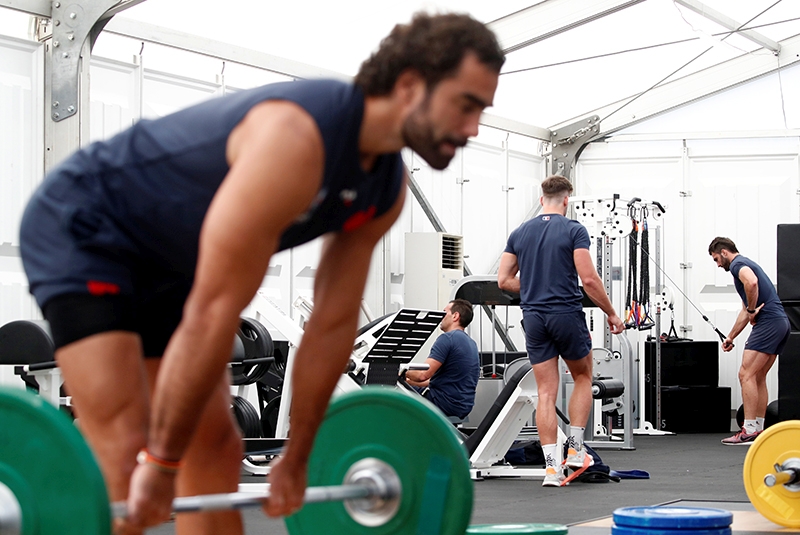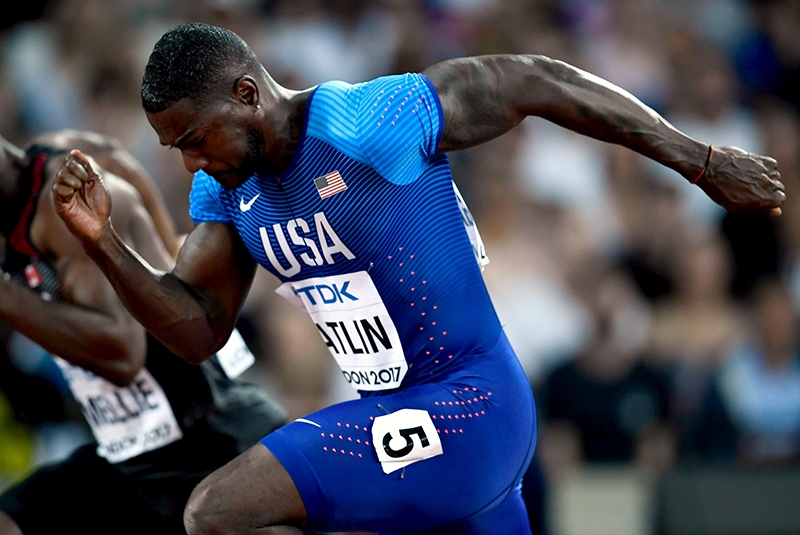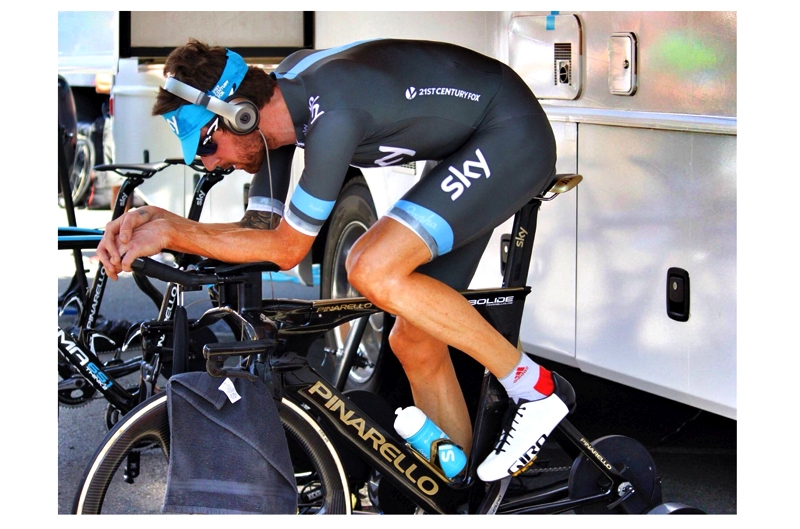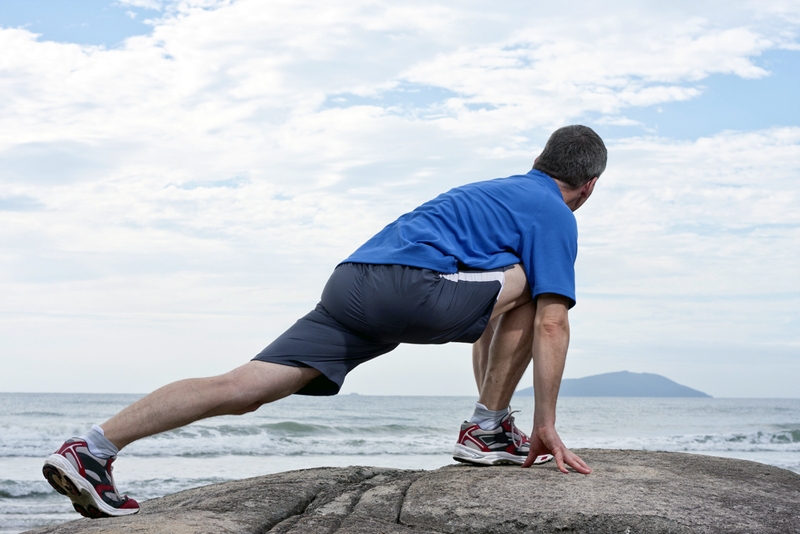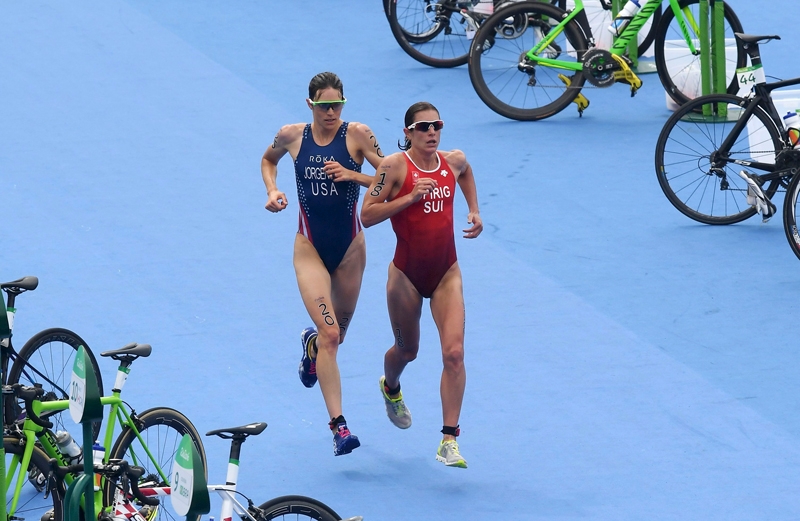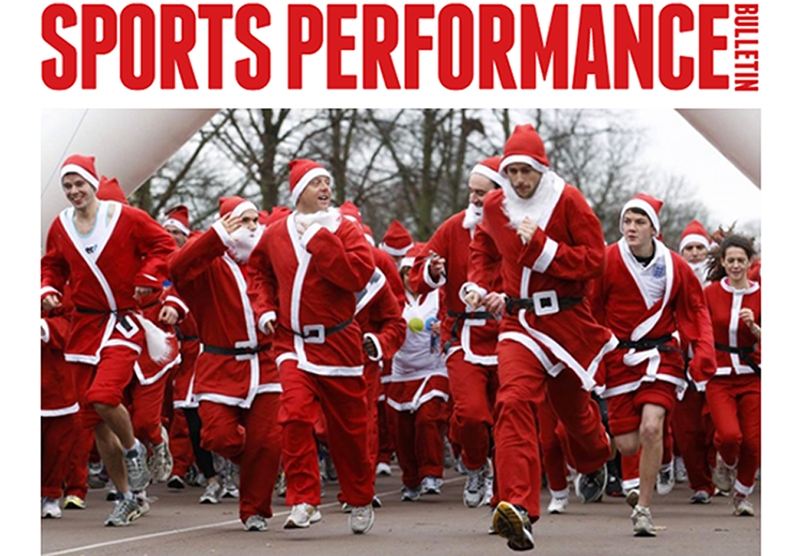You are viewing 1 of your 1 free articles. For unlimited access take a risk-free trial
Distance runners: activate your potential!
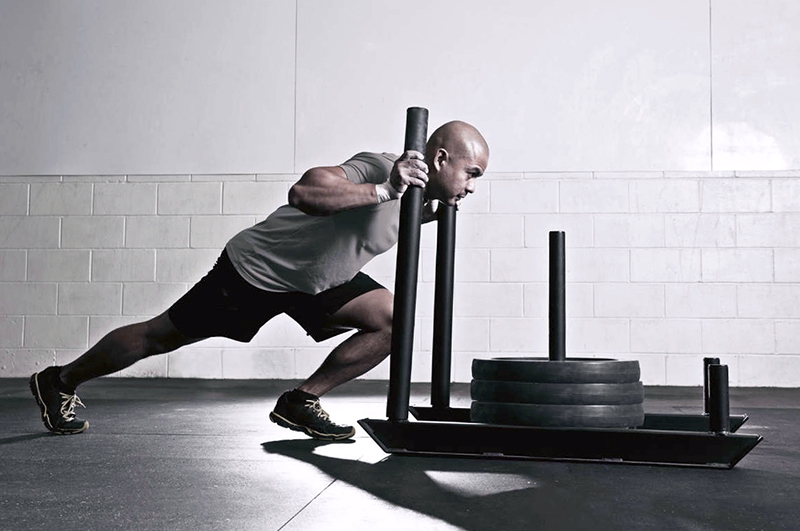
Tom Whipple explains how distance runners can harness the phenomenon of ‘post activation potentiation (PAP) to seriously improve performance!
In a recent Sports Performance Bulletin article, Tom Whipple described the phenomenon of post activation potentiation (PAP), and the use of PAP in complex training (CT) methods. Just to recap, PAP refers to the acute enhancement of neuromuscular function (power) as a direct consequence of its contractile history. CT is the method used to induce PAP and traditionally involves pairing two exercises; a heavy resistance exercise followed by a power exercise - usually a jump variety or sprint. For example:Back squat → Recovery interval → 20 meter hill sprint
If the back squat is of the right intensity (around 85% one rep max [1RM]) and the recovery interval is long enough for fatigue to dissipate (3-12 minutes), the sprint will be potentiated or ‘primed’ and significantly faster than if the squat was not performed.
PAP for runners
If you are a regular reader of PP you know that squat strength, jump distance, and sprint speed, are positively correlated with distance running performance. Running expert Owen Anderson notes in Running Science that 20-meter sprint speed may be the best field test available to predict 10km finishing time AND, when sprint speed is raised, improvement longer distance running consistently follows.How does PAP improve performance?
Scientists have proposed several mechanisms, but with runners in mind, we will expand upon one; increased muscle recruitment as it relates to stiffness. For the purposes of this article, consider strength and stiffness synonyms. Strength is largely a product of how effectively your brain recruits muscle fibres and, by means of attachment, the tendons and connective tissue you ALREADY possess. A motor unit (MU) is defined by a nerve that travels from the brain to its constituent muscle cells (figure 1). Improving strength, power, and running performance is a matter of accessing more and refining running specific MUs.Figure 1: The muscle/motor unit
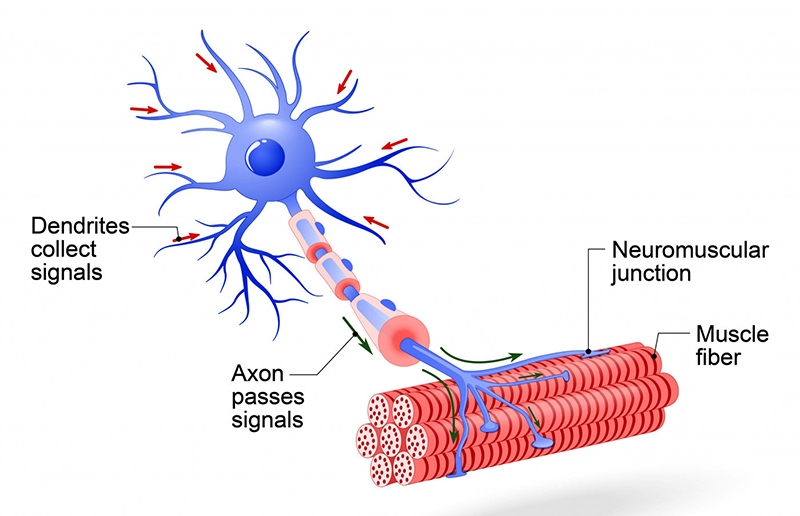
All things being equal, a stronger athlete is activating a greater percentage of his or her MUs than a less strong (we hesitate to use the adjective weak) athlete. As elite strength coach Pavel Tsatsouline wrote in ‘Power to the People’: “Your muscles are already capable of lifting a car. They just do not know it yet!” It is important for athletes to appreciate that both short and long term changes in strength, power, and endurance are largely due to adaptations between brain and body. But what about the cardiovascular system, you ask? Imagine yourself startled at night by the sound of an intruder entering your home; your brain sends signals for an increase in heart and respiratory rate BEFORE you have even thrown back the covers! The nervous system is the ultimate conductor of function.
Exercises to potentiate running
The brain recruits a certain number of MUs that is consistent with an anticipated or actual level of work. If you are planning on setting a new PB in the 5K, more MU’s must be called into action. To do this, higher-intensity loading using a ‘running-like’ pattern is the key. A squat or deadlift variety performed prior to running calls up more MUs than would be normally activated with running alone. This results in a supercharged performance state. In biomechanics, the capacity is described as an improvement in the rate of force development (RFD), which is a big part of the power equation. The window of this improved performance is known to last for about 20 minutes – ie long enough to perform a set of box jumps, raise your velocity at V02 max (VV02), or in theory, improve your race performances in distances up to 5,000 meters. As the old saying goes: ‘the nervous system is easy to trick but hard to convince’.Strength, stiffness, and running power
Although many runners complain of being stiff, in this context, it’s actually a very good thing. Stiffness is defined as the ability to resist a given force. As your running body becomes stronger and functions with greater stiffness, less deformation occurs when you land. Lesser deformation reduces tissue strain (and thus injury) and improves running performance. Scientific studies have concluded that stronger/stiffer runners are more injury resistant and economic(1,2).Examine closely the lower extremity alignment in the runners shown in figure 2. You will observe the runner on the right is deforming under load; her right lower extremity is collapsing inward. As a consequence, stance phase duration is prolonged leading to greater tissue strain, slower cadence, and less elastic return energy. Conversely, the runners on the left are stiffer and deform less; they are less likely to incur injuries and run with great economy. The vertical loads of running are greatest during mid stance, and this is where stiffness matters most.
Figure 2: Lower extremity alignment
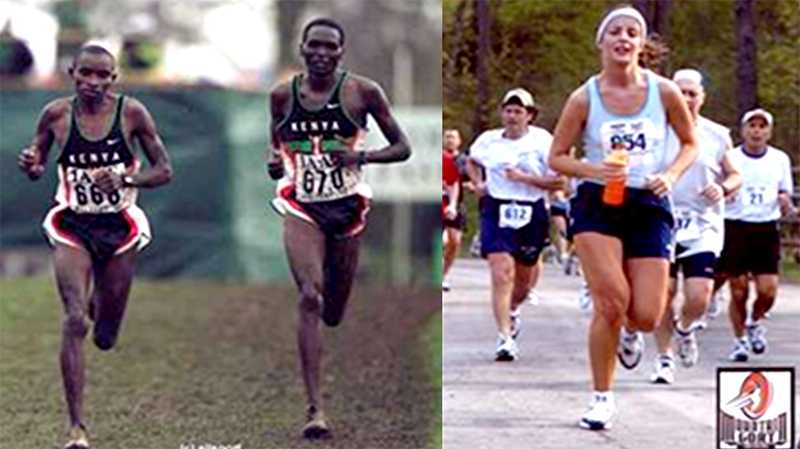
Quantitative elements for a successful potentiating exercise
Studies reveal that in order for complex training methods to induce PAP, athletes must possess a high degree of strength. Considering that the vertical loads in moderate paced running are in the order of 2-3 times body weight, preforming a lift with a load of less than 1.5 or two times body weight will be unlikely to raise your performance. Near maximal efforts are mandatory; consider 85% of your 1 repetition maximum (RM) the sweet spot. For example, if a 145 pound athlete is capable of performing a deadlift with 275 pounds for 1 repetition (1 RM); performing 2-3 sets of 2-4 repetitions with 235 pounds would be just about right to induce a favorable PAP response.Qualitative elements
Runners should focus on performing a potentiating exercise with meticulous technique, and what sport scientists refer to as ‘inter-muscular coordination’. Maintaining lower extremity alignment and avoiding collapse during strength training sessions are critical to avoiding injury and developing functional stiffness. When performing exercises like squats, consider the following points mandatory for safety and performance:- Train without shoes (or a minimalist flat) and spread your toes.
- Elevate your foot’s inner arch and do not allow it to collapse.
- Eliminate ‘power leaks’ by developing full body tension.
- Breathe in a manner that maximizes intra-abdominal pressure.
- Activate your hip’s external rotator muscles in a manner that prevents the limb from collapsing inward (figure 3).
- Maintain a ‘long and strong’ spine position and avoid any spinal movements while under load.
- Avoid training to the point of fatigue as this is a sign of reduced MU activation.
Figure 3: Maintaining good limb alignment
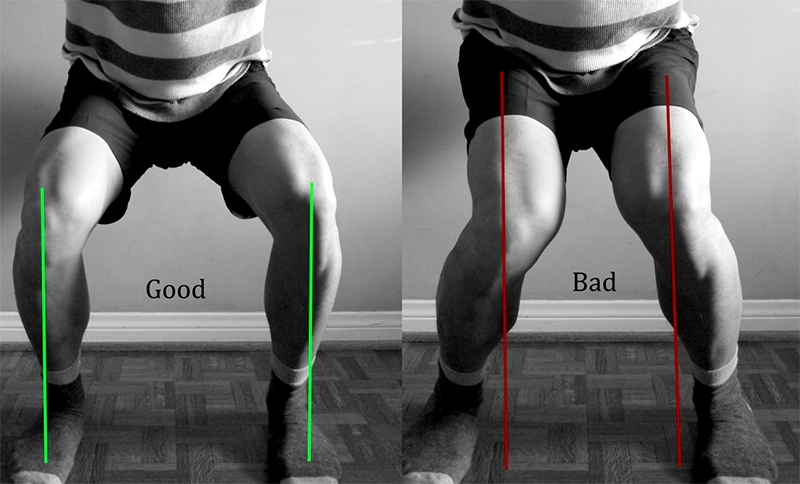
Other loading methods
Researchers have evaluated other tactics to elicit PAP in running athletes including, sled pulls, plyometrics, concentric-only resistance exercises, and loaded vest protocols. A recent study examined the effects of 6 X 10 second strides with a weighted vest (20% of body mass) as part of a warm-up (3). The specific protocol included:10-min self-paced jog → 5-min sub maximal run → Strides with weight vest → 10 minute recovery period. There then followed performance testing:
- Jumps (to determine stiffness)
- 5-min sub maximal run (to determine economy)
- Incremental treadmill test (to determine peak running velocity)
With improvements like this you may assume that weighted vest running should become a staple in your weekly training. However, although this line of research is still in its infancy, longer-term training studies need to be done in order to determine whether there are favorable long term adaptations and/or injury risks. Two training studies utilising weighted vests have been performed to date and their results are worth considering. A 2017 study of male amateur soccer players compared the longer-term effects of using weighted vests compared with unloaded sprint training on various tests including counter movement jumps, 10 and 30-m sprint speed, and repeated sprint ability(4).
The study involved having two groups of athletes perform sprint training twice weekly for six weeks with the only difference being the experimental group performed their sprints with an additional weight of 18.9% +/- 2.1% of body mass. Results revealed that both groups made significant improvements in all outcome measures. However, there was NO DIFFERENCE BETWEEN GROUPS. The study concluded that sprint training with and without a vest was equally effective.
Another study using male collegiate lacrosse players compared the results of sprint training under three conditions(5):
- Unloaded
- Weighted sleds (towing 10% body mass)
- Weighted vests (18.5% of body mass)
Confused? Don’t be. Although all three of these studies involved the use of weighted vests with similar loads (about 20% of body mass), there are some key differences that are important to consider. The first study used a weighted vest for ‘strides’ not sprints and found that jumping capacity, running economy, and peak running speed (not sprint speed) was acutely improved after a 10 minute recovery interval. This is by definition, an example of PAP - acutely improved performance as a consequence of contractile history.
The other two studies were longer term training studies and utilized weighted vests for sprint training (sprinting is faster than a running stride). And, in both studies, there was no clear long-term advantage of using a weighted vest on sprint speed. In fact, top end sprint speed is considerably reduced when you add an additional 20% weight to your body in the form of a vest. And as a consequence, many of the relevant forces and limb speeds are negated or reduced while wearing a vest as compared to non-vested sprint running.
The takeaway for distance runners at this time is that the use of a weighted vest may likely induce PAP through a transient increase in stiffness and lead to performance increases in running economy at submaximal paces and improve peak running speed in a graduated test. The use of a weighted vest for sprint training does not appear to be superior to sprint training without a weighted vest for training blocks lasting seven weeks or less. Future long-term training studies of distance runners using weighted vests are needed in order to clarify whether or not, favorable adaptations in stiffness, economy, or performance occur, independent of sprint speed.
Summary of PAP facts and recommendations for distance runners
- In order to maximise distance running performance, CT is a high return investment.
- CT methods using traditional lifts like the back squat, deadlift, and power clean, have been scientifically demonstrated to lead to both acute (PAP) and long term gains in strength, power, and performance.
- A training frequency of 2-3 X’s per week appears optimal but even a single weekly session may prove to be beneficial during the peak competitive season or during a hectic schedule.
- 2-5 sets of <5 reps using about 85% of your 1 RM load is the volume and intensity that has been determined to be optimal for with traditional CT - intense enough to recruit a high percentage of your MU’s while minimising fatigue.
- Focus on flawless technique and lower extremity alignment during your lifts; avoid collapsing toward the midline when the going gets tough!
- Complex training methods may be used to improve jump, sprint, interval training sessions, or race distances up lasting up to 20 minutes.
- Warm-up - 5-10 minutes of self-paced low intensity, 3-6 minutes high intensity running (60-85% peak power output)
- Loaded conditioning activity - 4-6 sets of around 10 seconds High-load resistance exercise, or addition of a load to a sport specific movement pattern
- Rest interval – 5-10 minutes
- Performance benefits - Middle-distance events and early stages of longer distance events most likely to benefit
Table 1: PAP to improve power or performance
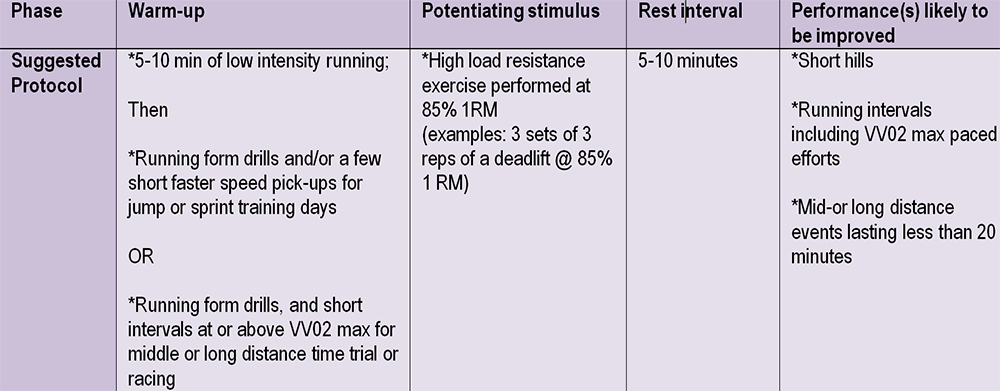
References
- Eur J Appl Physiol. 2010 Nov; 110(5): 1037-1046
- Sports Biomech. 2018 May; 16: 1-22
- J Sci Med Sport. 2015 Jan;18(1): 103-108
- J Strength Cond Res. 2017 Oct;31(10)2659-2666
- J Strength Cond Res. 2010 Dec;24(12):3287-3295
- J Strength Cond Res. 2018 Jan; epub ahead of print
Newsletter Sign Up
Testimonials
Dr. Alexandra Fandetti-Robin, Back & Body Chiropractic
Elspeth Cowell MSCh DpodM SRCh HCPC reg
William Hunter, Nuffield Health
Newsletter Sign Up
Coaches Testimonials
Dr. Alexandra Fandetti-Robin, Back & Body Chiropractic
Elspeth Cowell MSCh DpodM SRCh HCPC reg
William Hunter, Nuffield Health
Keep up with latest sports science research and apply it to maximize performance
Today you have the chance to join a group of athletes, and sports coaches/trainers who all have something special in common...
They use the latest research to improve performance for themselves and their clients - both athletes and sports teams - with help from global specialists in the fields of sports science, sports medicine and sports psychology.
They do this by reading Sports Performance Bulletin, an easy-to-digest but serious-minded journal dedicated to high performance sports. SPB offers a wealth of information and insight into the latest research, in an easily-accessible and understood format, along with a wealth of practical recommendations.
*includes 3 coaching manuals
Get Inspired
All the latest techniques and approaches
Sports Performance Bulletin helps dedicated endurance athletes improve their performance. Sense-checking the latest sports science research, and sourcing evidence and case studies to support findings, Sports Performance Bulletin turns proven insights into easily digestible practical advice. Supporting athletes, coaches and professionals who wish to ensure their guidance and programmes are kept right up to date and based on credible science.
